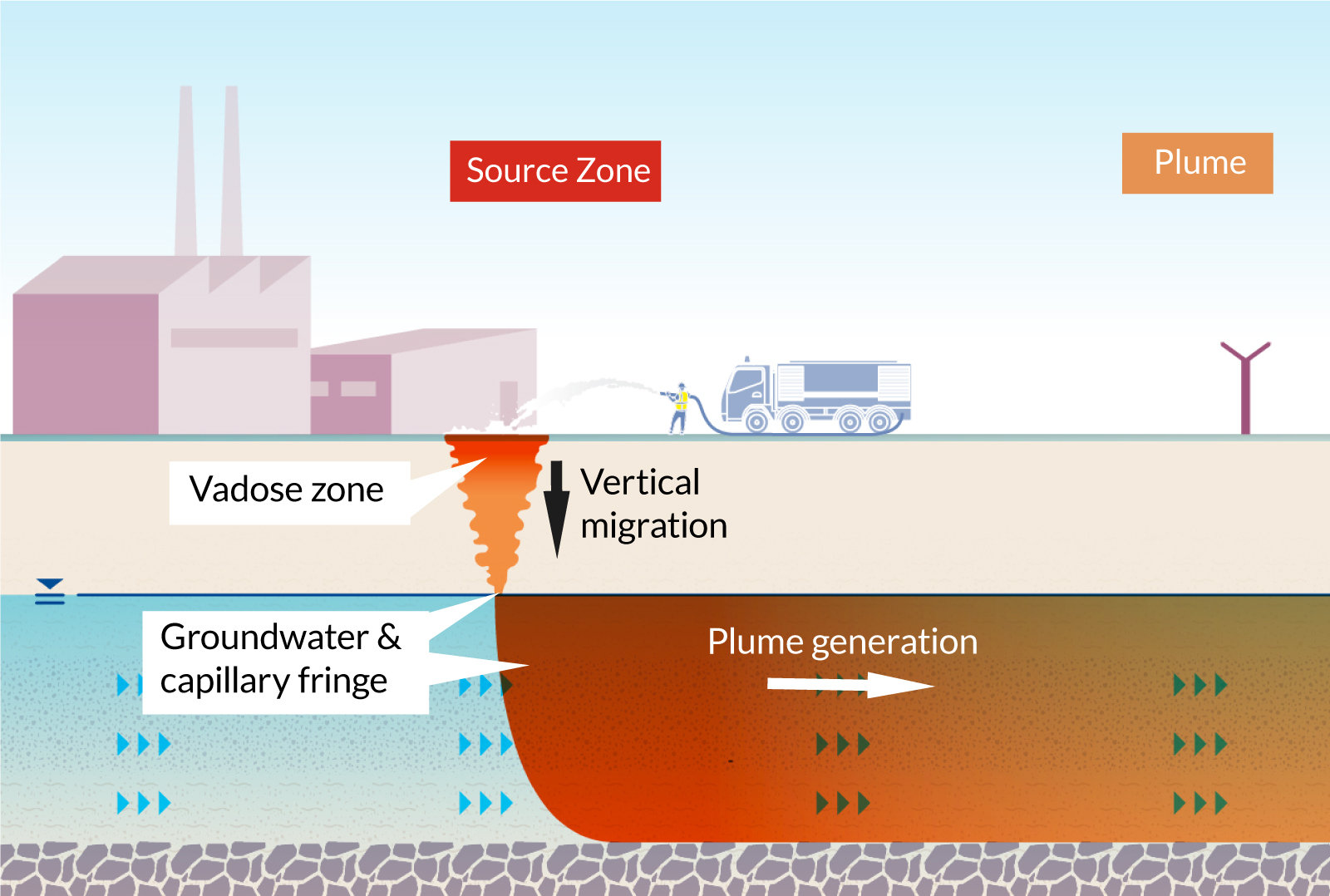Advanced Methods for Reliable PFAS Contamination Removal
The persistent difficulty of PFAS contamination demands the exploration of advanced removal techniques that can properly address these dangerous compounds. Cutting-edge innovations, such as advanced oxidation processes and different adsorption strategies, have actually emerged as appealing solutions in mitigating PFAS from influenced settings.
Comprehending PFAS Characteristics
Although per- and polyfluoroalkyl materials (PFAS) have been extensively utilized in different commercial and consumer items because of their distinct residential or commercial properties, their perseverance in the atmosphere postures considerable challenges to public health and safety. PFAS are a team of artificial chemicals identified by a carbon-fluorine bond, among the greatest chemical bonds understood, which adds to their outstanding security and resistance to deterioration. This security permits PFAS to gather in the atmosphere and living microorganisms, causing prospective unfavorable wellness impacts.
These exact same homes contribute to their ecological perseverance, as PFAS do not conveniently break down with all-natural procedures. Recognizing the chemical residential or commercial properties of PFAS is necessary for developing efficient approaches to manage and alleviate their environmental influence.
Innovative Remediation Technologies
The perseverance of PFAS in the environment has stimulated the advancement of cutting-edge removal technologies aimed at properly removing these impurities from impacted communities. Among one of the most promising approaches are sophisticated oxidation procedures (AOPs), which use powerful oxidants to break down PFAS substances into less unsafe compounds. AOPs can be customized to target particular PFAS frameworks, boosting their efficacy.
One more arising technology is the use of adsorption media, such as triggered carbon and ion exchange materials, which can precisely catch PFAS from polluted water. These materials have actually shown substantial elimination effectiveness, although regular substitute and regrowth are essential to maintain efficiency.
Membrane layer purification strategies, including reverse osmosis and nanofiltration, are additionally acquiring grip in PFAS remediation. These methods can efficiently divide PFAS from water, offering a sensible solution for dealing with contaminated sources. In addition, thermal therapy methods, such as incineration, can disintegrate PFAS right into safe results, though they call for careful management to control exhausts.
Jointly, these cutting-edge removal innovations stand for significant innovations in the continuous fight against PFAS contamination, offering various techniques to recover afflicted atmospheres and shield public wellness.

Bioremediation Strategies
Bioremediation methods offer an appealing strategy to dealing with PFAS contamination by utilizing the all-natural capabilities of microbes to break down these persistent substances (m270 waste management). This approach includes using microorganisms, fungis, and other microorganisms that can metabolize or transform PFAS substances right into less unsafe results
Current innovations in molecular biology and ecological microbiology have enhanced our understanding of microbial communities and their potential functions in PFAS destruction. Scientists are proactively checking out details stress of germs, such as Pseudomonas and Bacillus, which have demonstrated the capacity to damage down particular PFAS compounds.
In situ bioremediation methods, where bacteria are boosted directly in contaminated settings, can be particularly effective. This strategy frequently entails the application of nutrients or electron contributors to advertise microbial development and activity. In addition, ex situ techniques, such as bioreactors, enable controlled conditions that can maximize degradation rates.
Regardless of the guarantee of bioremediation, difficulties continue to be, including the complex nature of PFAS substances and the demand for substantial field testing - m270 waste management. Proceeded study and advancement will certainly be essential to improve these strategies and assess their efficiency in Clicking Here varied environmental contexts
Adsorption and Filtering Approaches
Dealing with PFAS contamination typically includes utilizing adsorption and filtering techniques, which are created to eliminate these consistent chemicals from water and dirt. Among the different methods, triggered carbon adsorption is commonly utilized as a result of its high surface area and porosity, making it possible for effective capturing of PFAS particles. Granular triggered carbon (GAC) systems are especially favored for dealing with big volumes of infected water, while powdered turned on carbon (PAC) can be made use of for smaller-scale applications.
Ion exchange materials likewise show promise in PFAS removal, operating by trading PFAS ions with less damaging ions in the water. This approach has shown efficiency in concentrating PFAS substances, promoting their subsequent elimination. In addition, membrane filtering techniques, such as reverse osmosis and nanofiltration, run by utilizing semi-permeable membranes to separate PFAS from water, successfully reducing their concentrations.
While these approaches are effective, they should be meticulously chosen based on the details PFAS substances present and the ecological context. Continuous advancements in products science and design are causing the development of unique adsorbents and filtration systems that improve elimination effectiveness and reduce operational prices, thereby enhancing general remediation initiatives.
Regulatory and Policy Considerations
Exactly how can efficient regulative structures enhance the click site management of PFAS contamination? Thorough plans are necessary to make sure a coordinated and durable reaction to the difficulties postured by per- and polyfluoroalkyl substances (PFAS) Regulations can develop clear standards for surveillance, reporting, and remediating PFAS-contaminated sites, fostering liability amongst industries and public entities. (m270 waste management)

Additionally, monetary incentives and gives can be integrated right into policies to urge the fostering of advanced removal innovations. Policymakers must additionally focus on research study and growth, guaranteeing that arising approaches for PFAS elimination are verified and carried out properly.
Moreover, public understanding and interaction are crucial elements of any regulatory method, encouraging areas to advocate for their health and wellness. Eventually, a well-structured regulatory atmosphere will not only boost the monitoring of PFAS contamination yet additionally advertise sustainable techniques that safeguard future generations.
Verdict
In summary, the intricacy of PFAS contamination necessitates the fostering of innovative removal approaches. Innovative technologies such as sophisticated oxidation procedures, adsorption strategies, and membrane layer purification have shown considerable effectiveness in removing these relentless substances from infected water resources. Furthermore, governing frameworks must advance to support the application of these modern technologies, guaranteeing risk-free and efficient management of PFAS pollutants. Continued r & d in this area continue to be essential to dealing with the obstacles positioned by PFAS contamination.